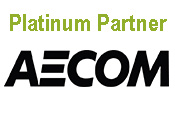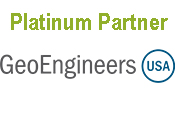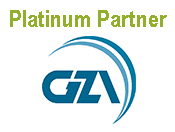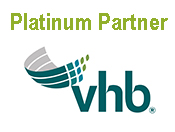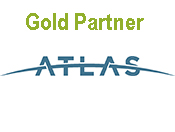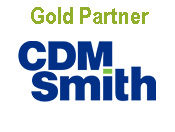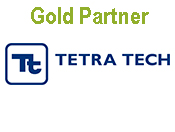Lessons Learned from 2013 Audits of Remedial Systems
By: The LSPA's Loss Prevention Committee
Continuing our review of Notices of Audit Findings (NOAFs), the Loss Prevention Committee (LPC) reviewed those NOAFs related to remedial systems. In most cases, MassDEP conducted a Level 2 audit, which involves a review of relevant reports and a site visit. During many of these audits, MassDEP identified issues beyond the remedial systems themselves. In some cases, MassDEP included helpful advice on these other issues in the NOAF, and in other cases MassDEP issued Notices of Noncompliance (NONs). The LPC also noticed that in several cases where deficiencies were identified and corrected within six weeks, an NON was not issued and no further action was required. We also noticed that specific auditors appeared to focus on remedial system audits.
Our Review
We reviewed 67 NOAFs, which break down as follows:
| Region |
# NOAFs |
# of NOAFs with deficiancies
|
# of NOAFs with NONs |
| Western Regional Office |
20 |
4 |
4 |
| Central Regional Office |
18 |
4 |
1* |
| Northeast Regional Office |
28 |
10 |
0 |
| Southeast Regional Office |
1 |
1 |
1 |
*One of the NOAFs from the Central Regional Office was resolved with an Administrative Consent Order with Penalty that also constituted a Notice of Noncompliance.
Screening Checklists
If you attended the February 2014 LSPA membership meeting, you may recall that attorney Jane Rothchild from MassDEP stated that screening checklists are often used by MassDEP to screen sites for potential closer scrutiny and possibly enforcement. All of the regions used these checklists for their remedial system audits, and three of the regions included these checklists with the NOAFs the LPC received for review. The regions appear to use slightly different checklists:
- The Western Regional Office uses either an “RSI Audit Pre-Inspection Screening Checklist” or “L2 Audit Pre-Inspection Screening Checklist.” These two checklists are virtually identical, and we could not identify a pattern as to why one was used in some cases and not others. Depending on the type of remedy or remedial system, a “Remedial System Information Sheet” or “Monitored Natural Attenuation Information Sheet” was also completed and attached.
- The Northeast Regional Office did not include checklists with the NOAFs that were provided to the LPC, but each NOAF indicated that a “Remedial System Audit Inspection Sheet” was an attachment.
- The Central Regional Office usually attached an “Audit Inspection Screening Checklist,” and in some cases attached a “Remedial System Audit Inspection Checklist.”
- A “Remedial System Field Screening Form” was used for the one NOAF we reviewed from the Southeast Regional Office.
LSPs should consider whether reviewing their remedial systems against these checklists would help identify concerns before they are identified by MassDEP. The LSPA has received blank copies of many of these checklists from MassDEP, and they are posted here on the members page of the LSPA website.
Summary of Deficiencies Identified
In several instances, deficiencies directly related to the remedial system were not identified in the course of the audit, but nonetheless other deficiencies were noted and described in the NOAF. We have included some of these below, but have not included any issues that were identified during a simultaneous AUL inspection (if one occurred) because those will be covered in another article. In several cases, MassDEP declined to issue an NON when a deficiency identified during the inspection was corrected quickly and evidence was promptly provided to MassDEP. Below is a brief summary of the types of issues that were most frequently raised in the NOAFs.
Nature and Extent. Several NOAFs addressed issues related to determining the nature and extent of contamination:
- In one NOAF from the Central Region, MassDEP noted no violations relating to the remedial system being operated to address LNAPL as part of Phase V Remedy Operation Status (ROS) response actions, but indicated in the screening checklist that another monitoring well “may be needed to further define” the extent of LNAPL.
- In another NOAF from the Central Region, MassDEP noted no violations relating to the sub-slab depressurization system (SSDS) being operated as part of a temporary solution. However, based on the results of its own indoor air sampling, MassDEP expressed concern in the screening checklist that, due to detections of toluene and xylenes in indoor air, vapor intrusion may be occurring from an up-gradient gasoline release and recommended further evaluation.
- In an NOAF from the Northeast Region, MassDEP noted no violations relating to the remedial system involving LNAPL recovery from several wells. However, MassDEP noted that a prior release at the site had been closed out with a Class A-2 RAO in 1997 and that that release involved a release of oil to a drywell. Although impacted soil around the drywell had been excavated and the drywell had been closed, the source of the oil entering the drywell had not been investigated. MassDEP appeared to be suggesting that the source of the drywell release may have also been related to the oil being addressed by the existing system. MassDEP required that the PRP evaluate whether the conditions for a Class A-2 RAO had been met at the site and submit that evaluation with the next status report.
- In another NOAF from the Northeast Region, MassDEP identified no violations relating to the operation of the remedial system, which was designed to prevent water and oil from entering a basement during high tide events. However, MassDEP identified three concerns regarding the site. First, MassDEP noted that concerns raised during a prior audit had not been addressed. These concerns related to the delineation of LNAPL, “inconsistent NAPL gauging and groundwater sampling,” and the failure to identify PCBs and lead as contaminants of concern at the site although they had been detected in the influent to the treatment system. Second, a recent Remedy Operation Status (ROS) filing had indicated that the existing treatment system would achieve a Permanent Solution, but this was inconsistent with the Class C-1 RAO and associated reports previously filed for the site and was not based on new information. Finally, an updated Operation, Maintenance, and Monitoring (OMM) Plan was not included with the recent ROS submittal. MassDEP established an Interim Deadline for the termination of the Class C-1 RAO and the submittal of an OMM Plan that addressed data gaps and provided for adequate monitoring to demonstrate that performance standards for achieving and maintaining ROS are met.
Remedial Additives / Post Remedy Sampling. The primary issues identified were the failure to seek permission from MassDEP to apply remedial additives within 100 feet of a private well and the failure to conduct adequate post-application sampling.
Failure to Achieve 95% Treatment Efficiency of Off-Gas Component. In several NOAFs, MassDEP indicated that the required 95% treatment efficiency was not being met. In another NOAF, MassDEP expressed concern that frequent carbon replacement (1 to 2 times per month since system startup) as a result of failures to meet the 95% removal rate might indicate an inadequate design.
Timing of Submittals. In several NOAFs, MassDEP requested that future reports be submitted in a timely fashion, or otherwise indicated that reports had not been submitted on time. In most cases, this was not identified as a violation.







